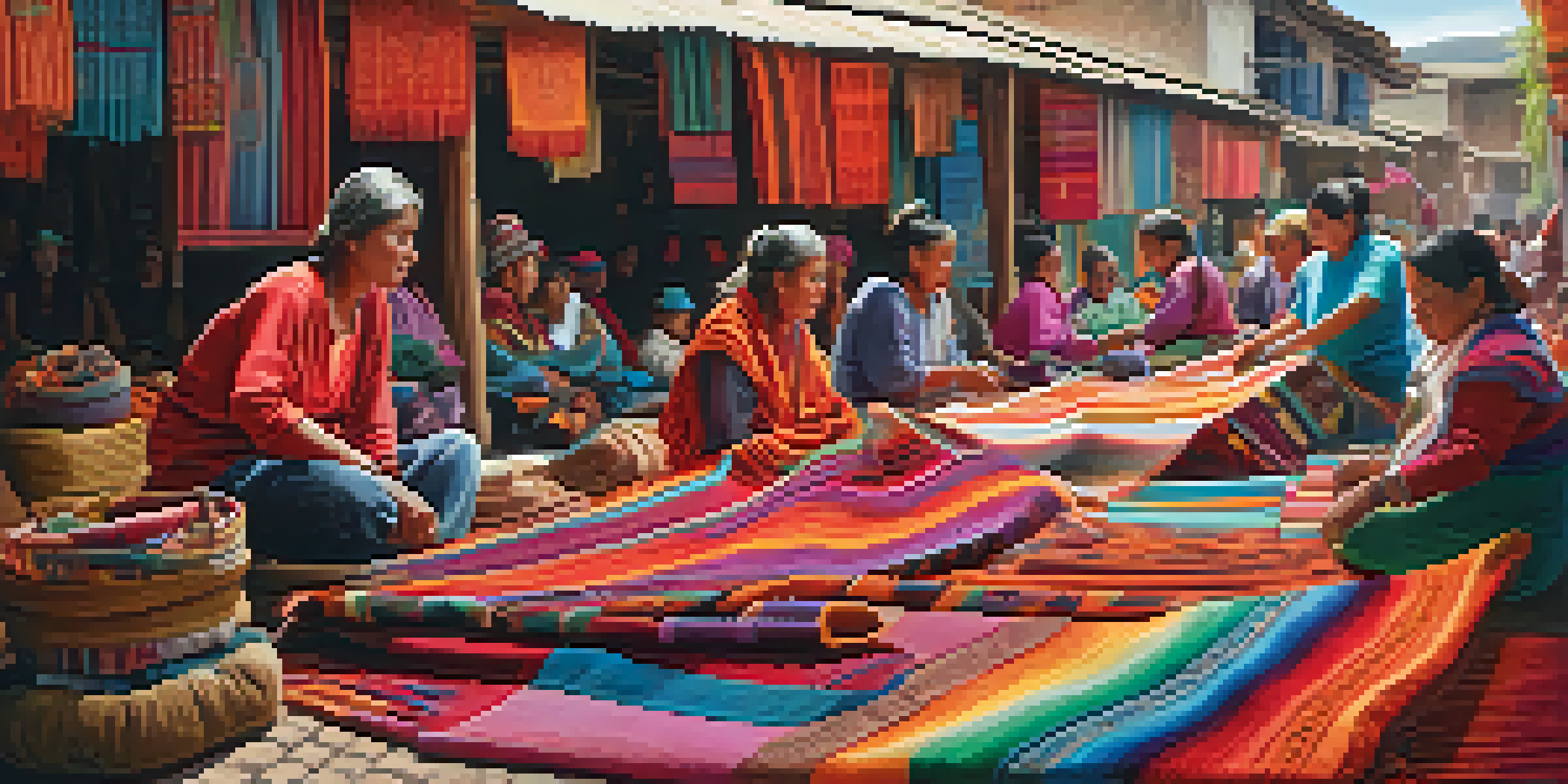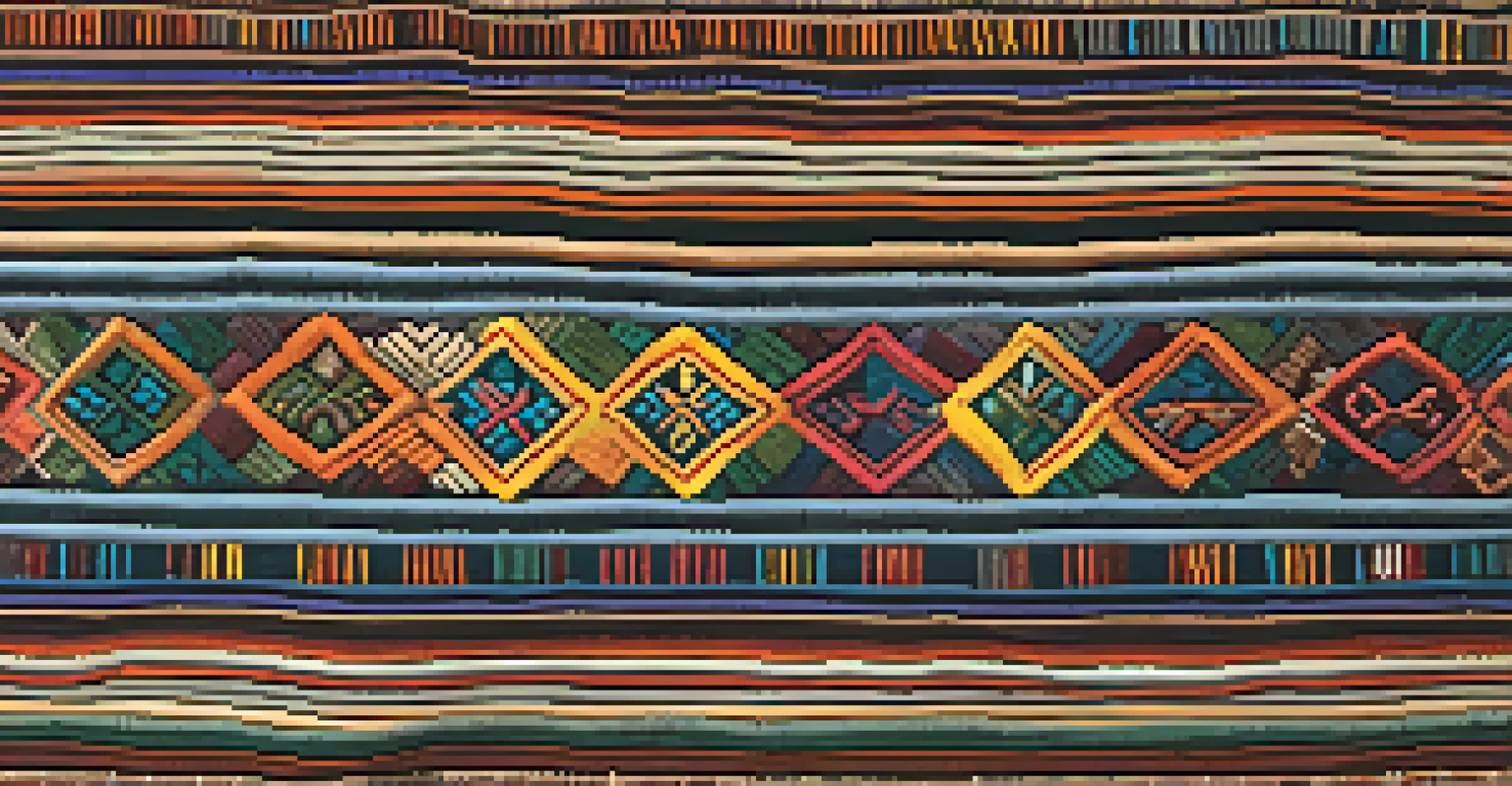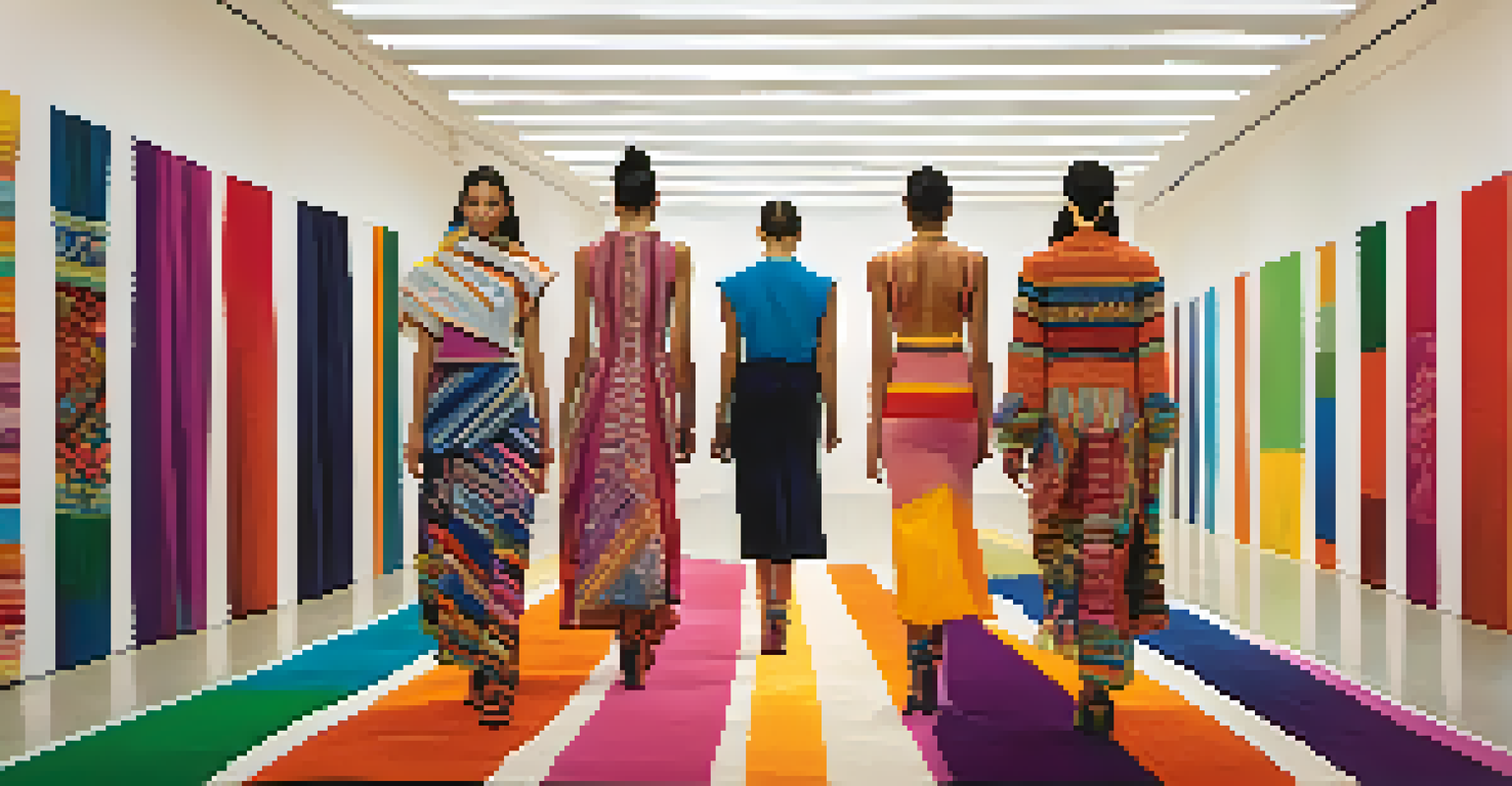An Overview of Peruvian Textile Materials and Their Uses

Introduction to Peruvian Textiles and Their Cultural Significance
Peruvian textiles are not just fabric; they embody centuries of history and culture. Each piece tells a story, showcasing the artistry and traditions of indigenous communities. From the vibrant colors to intricate patterns, these textiles reflect the rich heritage of Peru.
Textiles are a reflection of culture, a canvas on which the stories of communities are painted.
Historically, textiles played a vital role in daily life, serving as clothing, ceremonial items, and even currency. The techniques used in weaving and dyeing have been passed down through generations, highlighting the importance of preserving these skills.
Today, Peruvian textiles continue to captivate people around the world, appreciated for their beauty and craftsmanship. They serve as a bridge connecting contemporary fashion with age-old traditions, making them an essential part of Peru's cultural identity.
Key Natural Fibers Used in Peruvian Textiles
Peru is renowned for its natural fibers, especially alpaca, llama, and cotton. Alpaca wool is prized for its softness and warmth, making it ideal for winter garments. Llama fiber, while coarser, is durable and often used in outerwear and accessories.

Peruvian cotton is another standout, famous for its long fibers and vibrant colors. This cotton is naturally grown in various hues, reducing the need for synthetic dyes and promoting eco-friendliness in textile production.
Cultural Heritage in Textiles
Peruvian textiles are rich in history and cultural significance, showcasing the artistry of indigenous communities.
These fibers not only support sustainable practices but also showcase the unique biodiversity of Peru. The choice of material can drastically affect the final product, influencing everything from texture to warmth.
Traditional Weaving Techniques in Peru
The art of weaving in Peru is a time-honored tradition, often practiced on backstrap looms. This technique allows artisans to create intricate designs while maintaining control over the tension and pattern. Each region in Peru has its own distinctive style, reflecting local customs and natural surroundings.
Fashion is the armor to survive the reality of everyday life, but it can also be a connection to our roots.
Weaving is often a communal activity, with families and communities coming together to share skills and stories. This collaborative spirit not only strengthens social bonds but also ensures the survival of traditional techniques.
Modern artisans continue to innovate while respecting these techniques, blending traditional methods with contemporary designs. This evolution keeps the craft alive, appealing to new generations while honoring the past.
Dyeing Techniques and Natural Dyes in Peruvian Textiles
Color plays a crucial role in Peruvian textiles, with many artisans using natural dyes derived from plants, minerals, and insects. These dyes not only provide vibrant hues but also connect the textile to the land and its resources. For example, indigo plants are used for blues, while cochineal insects create rich reds.
The dyeing process itself is an art form, involving careful preparation and application. Artisans often experiment with different mordants to achieve various shades, showcasing their creativity and knowledge of local flora.
Sustainable Natural Fibers
Alpaca, llama, and naturally dyed cotton fibers highlight Peru's commitment to eco-friendly textile production.
Natural dyes are more than just aesthetic choices; they also contribute to the sustainability of the textile industry. By using locally sourced materials, artisans reduce the environmental impact associated with synthetic dyes.
The Role of Symbols and Patterns in Peruvian Textiles
Patterns and symbols in Peruvian textiles carry deep meanings, often rooted in mythology, nature, and spirituality. Common motifs include animals, plants, and geometric shapes, each telling a story or representing specific concepts. For instance, the llama is often depicted as a symbol of abundance and strength.
These designs are not randomly chosen; they are carefully considered and often vary from one community to another. This diversity enriches the textile landscape of Peru, making each piece unique.
Understanding these symbols adds another layer of appreciation for Peruvian textiles. It invites viewers to engage with the culture on a deeper level, recognizing the narratives that each piece holds.
Contemporary Uses of Peruvian Textiles in Fashion
In recent years, Peruvian textiles have gained recognition in the global fashion scene. Designers are increasingly incorporating traditional fabrics and techniques into modern clothing, creating a fusion of old and new. This trend not only elevates the aesthetic appeal but also promotes ethical fashion practices.
By choosing Peruvian textiles, brands support local artisans and help preserve traditional methods. This partnership fosters economic growth in rural communities, ensuring that these skills are passed down to future generations.
Modern Fusion in Fashion
Contemporary designers are blending traditional Peruvian textiles with modern styles, promoting ethical fashion and supporting local artisans.
Moreover, consumers are becoming more conscious of their purchasing decisions, seeking unique pieces that tell a story. Peruvian textiles fit this demand perfectly, offering items that are not only stylish but also rich in cultural significance.
Conclusion: The Future of Peruvian Textiles
The future of Peruvian textiles looks promising, with a growing interest in sustainable and ethically produced fashion. As more people recognize the value of these handcrafted pieces, the demand for authentic Peruvian textiles is likely to increase. This shift presents an opportunity for artisans to thrive while maintaining their cultural heritage.
In addition, initiatives aimed at teaching traditional weaving and dyeing techniques are emerging, ensuring that these skills are not lost. Workshops and educational programs are helping a new generation of artisans to connect with their cultural roots.

Ultimately, the journey of Peruvian textiles is a testament to the resilience of tradition in a modern world. By embracing both heritage and innovation, these textiles will continue to inspire and enrich lives for years to come.